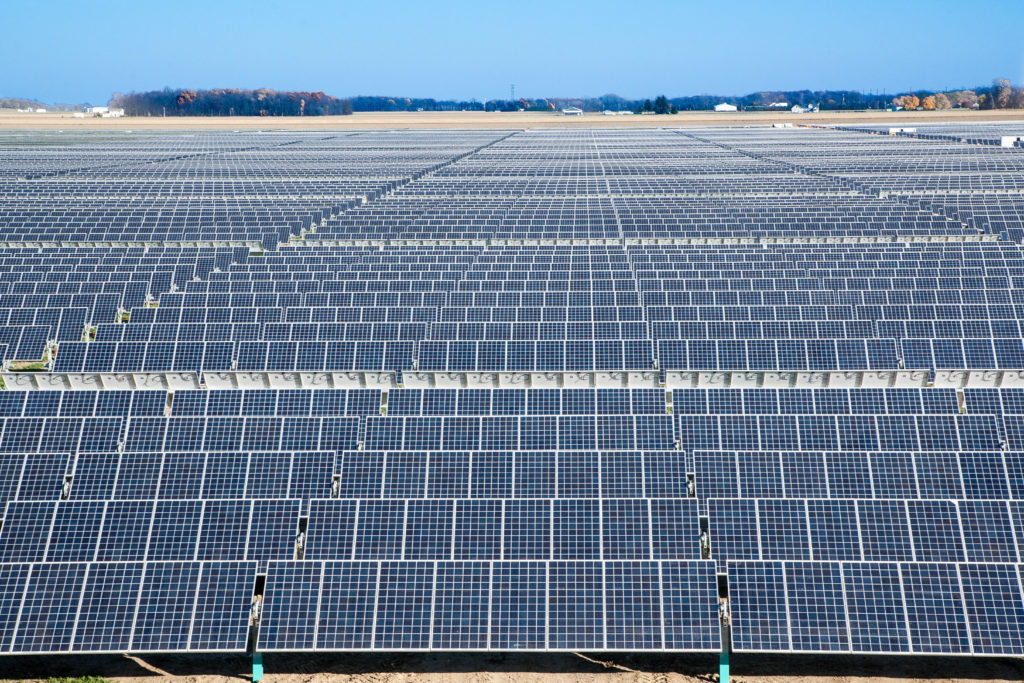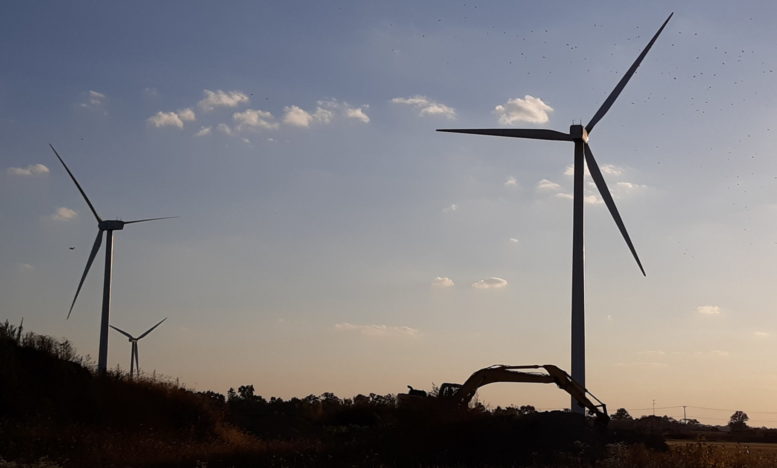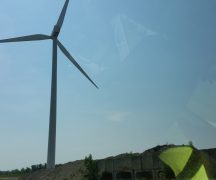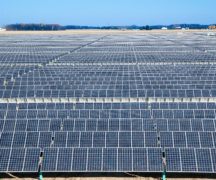By JAN McLAUGHLIN
BG Independent News
Move over wind, send in the sun. That’s not a wishful weather forecast – but a possible energy plan for Bowling Green.
After years of limping along, the four giant wind turbines piercing the flat landscape west of Bowling Green will be coming down in early 2025. In their place, city leaders are investigating the installation of solar panels.
While the wind turbines put Bowling Green on the map for renewable energy more than two decades ago, they have a lifespan of about 20 years, require costly maintenance, and are much more difficult to get permitted.
With its continued commitment to green energy, the city’s Board of Public Utilities voted Monday evening to express interest in a solar generation project in partnership with AMP Ohio. After numbers are crunched and factors considered, the information will be presented to the board for approval or rejection.
BG Utilities Director Brian O’Connell said the city has been considering alternatives to replace the turbines, and solar was selected as the most viable option. The city’s acreage west of the county landfill, home to four wind turbines now, will be able to house 40 acres of solar fields.

Bowling Green partnered with AMP Ohio for the 20MW solar field east of the city on Carter Road. The acreage west of the city has space for a 5.5MW solar installation, also using tracking panels that move with the sun throughout the day.
The project could provide around 2% of the city’s annual energy supply, with options for a 25-, 30-, or 35-year purchased power agreement. Bowling Green would only purchase the energy generated and delivered to the city.
The solar field would be connected to the city’s distribution circuit on Poe Road and would provide peak shaving value. The tracker system would generate power earlier and later in the day and better match up the city’s peak hours of use.
According to O’Connell, the city could keep the renewable energy credits and sell them to reduce the cost of the project. Because solar fields are so much easier to install than wind turbines, the system could be operating by the end of 2025.
As with its agreement for the solar field on Carter Road, the city would own the property and maintain everything outside the fence. The solar developer would own, operate, and maintain the solar generating system inside the fence.
Construction of the project would require that 80% of the labor reside in Ohio. They would be paid prevailing wages.
O’Connell announced in 2022 that the turbines would soon stop spinning, since the maintenance contract was no longer renewable.
“Sorry to report the retirement date is coming up – but it’s time,” O’Connell said. “Nobody wants to see them go. But we knew going into it they weren’t going to be there forever.”
The wind project at the Wood County Landfill started generating power in 2003 with two turbines, then added two more in 2004. The original capacity of the project was 7.2MW – which was enough to supply electricity for approximately 2,500 residential customers.
The energy production was cut to 5.4 megawatts in 2021 when one of the turbines was retired early due to the expense of repairs.
The project has been a success for Bowling Green as a green energy source and a statement of the city’s values. The city had the distinction of being home to Ohio’s first utility-sized wind farm.
“The wind turbines have been a landmark on our western horizon for two decades,” O’Connell said.
But replacement parts are hard to find, the repairs are taking longer and the turbine productivity has suffered in the last few years. Plus repairs aren’t cheap.
Failed gearboxes can cost up to $500,000 to replace. And arranging for a crane tall enough to make the repairs can be time-consuming.
“We have kept the turbines going as long as possible, but the fact is they have reached the end of their useful life,” O’Connell said in 2022.
AMP considered replacing the units, he said, but there are issues with the site. Most manufacturers want to put in bigger units, which would reduce the number of turbines that would fit on the site to two. To be profitable, more units would have to fit on the site.
And the costs are steep. When the wind turbines were erected, they cost about $2 million a piece. In 2020, the cost to replace them with newer models was estimated at $8.8 million a piece.





